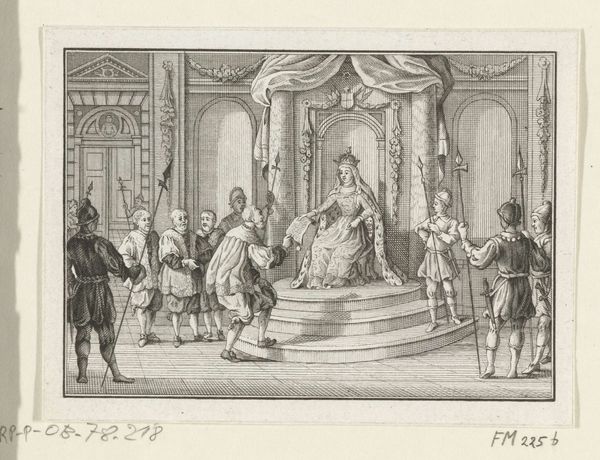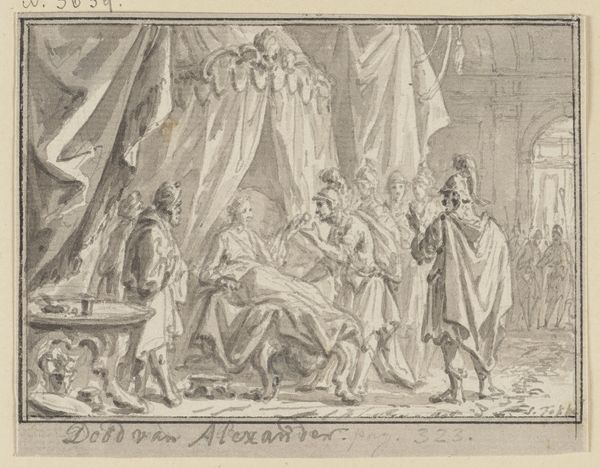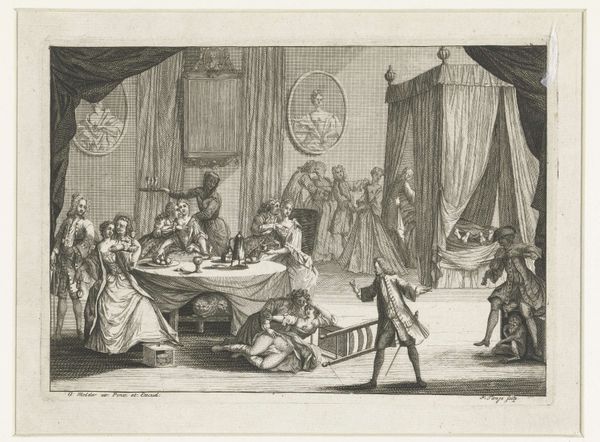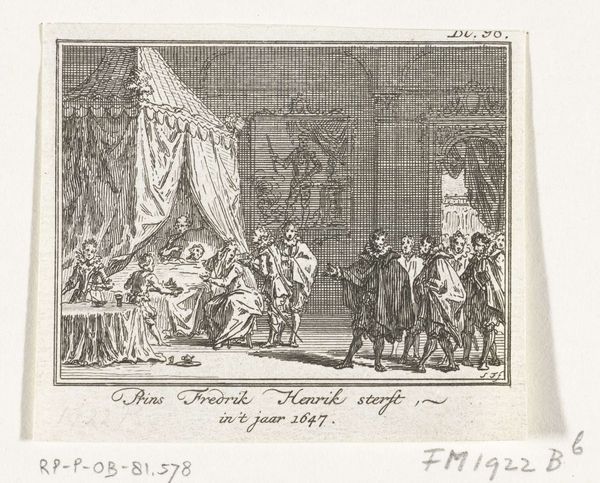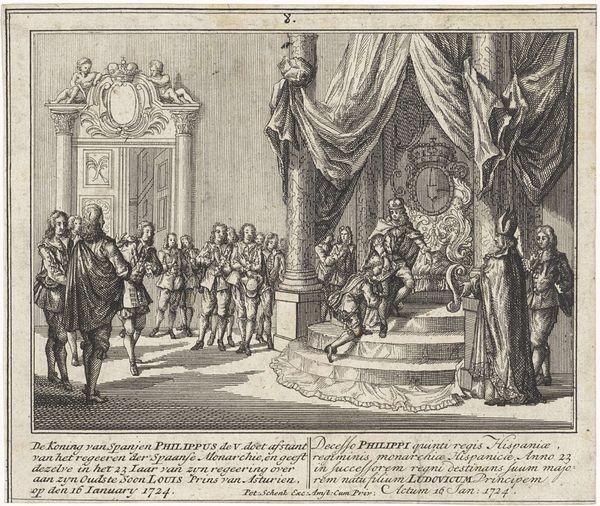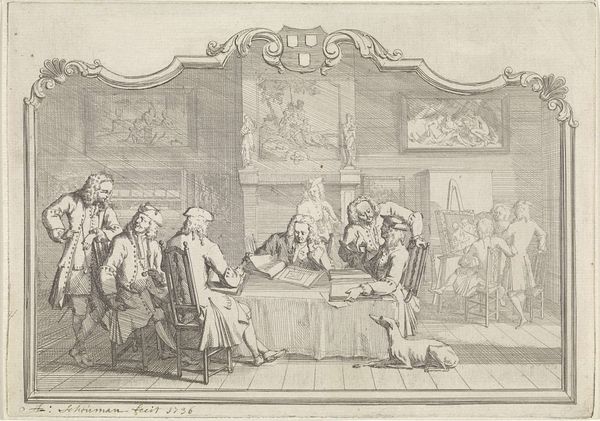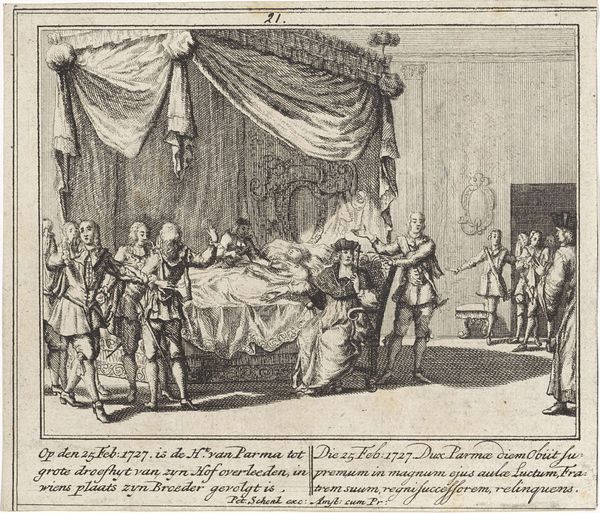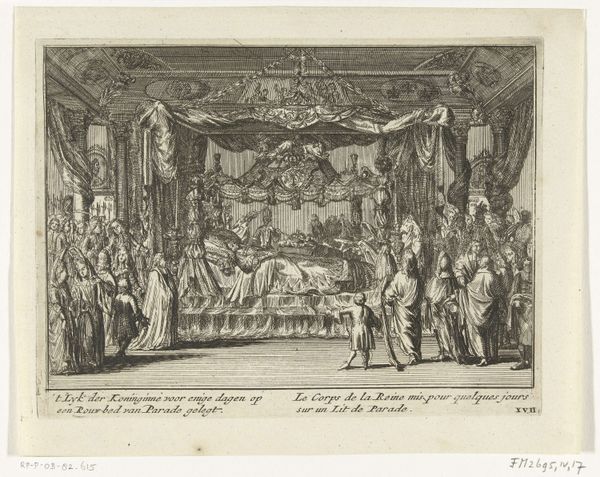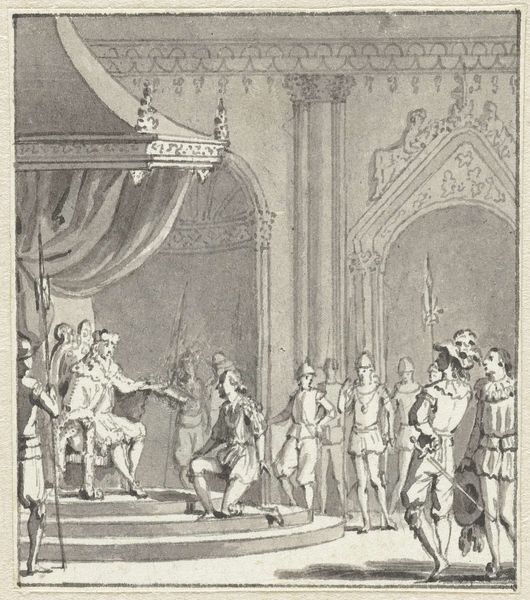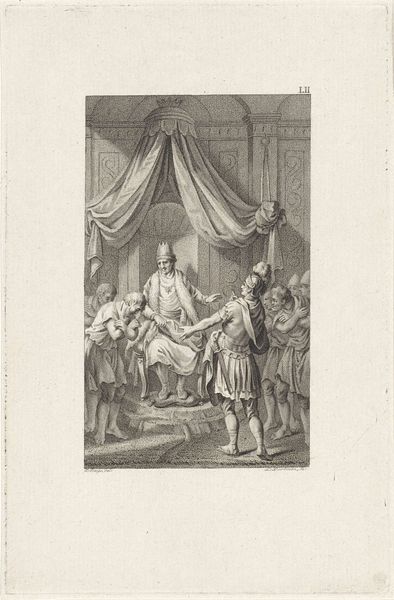
drawing, pencil, pen
#
drawing
#
comic strip sketch
#
toned paper
#
narrative-art
#
baroque
#
pencil sketch
#
sketch book
#
figuration
#
personal sketchbook
#
sketchwork
#
pen-ink sketch
#
pencil
#
sketchbook drawing
#
pen
#
history-painting
#
storyboard and sketchbook work
#
sketchbook art
Dimensions: height 81 mm, width 106 mm
Copyright: Rijks Museum: Open Domain
Editor: Here we have "Brave Deed of the Councilor Crassus," a drawing made sometime between 1722 and 1784 by Simon Fokke. It’s currently housed in the Rijksmuseum. The gray monochrome gives it an ancient, austere feel, but there’s also a clear narrative being conveyed. What catches your eye, or how do you interpret this work? Curator: Immediately, I'm drawn to the symbolic weight of the figures: Crassus, and the prisoners before him. The chained figures, presented with what appears to be their freedom…or perhaps something else. The presentation mimics the idea of sacrifice, the ultimate symbolic act in many cultures. Editor: Sacrifice…in what way? I mostly saw it as a depiction of a historical event. Curator: Precisely! History itself is filled with layers of constructed meaning. What do chains symbolize to you, beyond literal restraint? And the objects they are forced to carry… are they empty or full? Their apparent submission versus Crassus' stance; the power dynamics vibrate with unspoken tension. Think of how artists throughout time have used chains - from enslaved peoples to modern day fetish and fashion, from literal historical enslavement to metaphorical limitations imposed on the mind or spirit, chains are a common cultural reference. What do you make of them in this setting? Editor: So you’re saying Fokke isn’t just illustrating a story; he's tapping into deeper, universal themes of power, sacrifice, and maybe even the illusion of choice. And the chains as a sign of more than the literally enslaved... Wow, that does make you look at the drawing in a completely new way. Curator: Exactly. Fokke employs familiar imagery to stir something resonant within us, something beyond the immediate narrative. What symbols persist, and how do they shift in meaning across centuries? These are questions worth exploring. Editor: This has really shifted my perspective on how to read historical artwork! Curator: Indeed. Every image carries layers, and uncovering them reveals the lasting power of art.
Comments
No comments
Be the first to comment and join the conversation on the ultimate creative platform.
